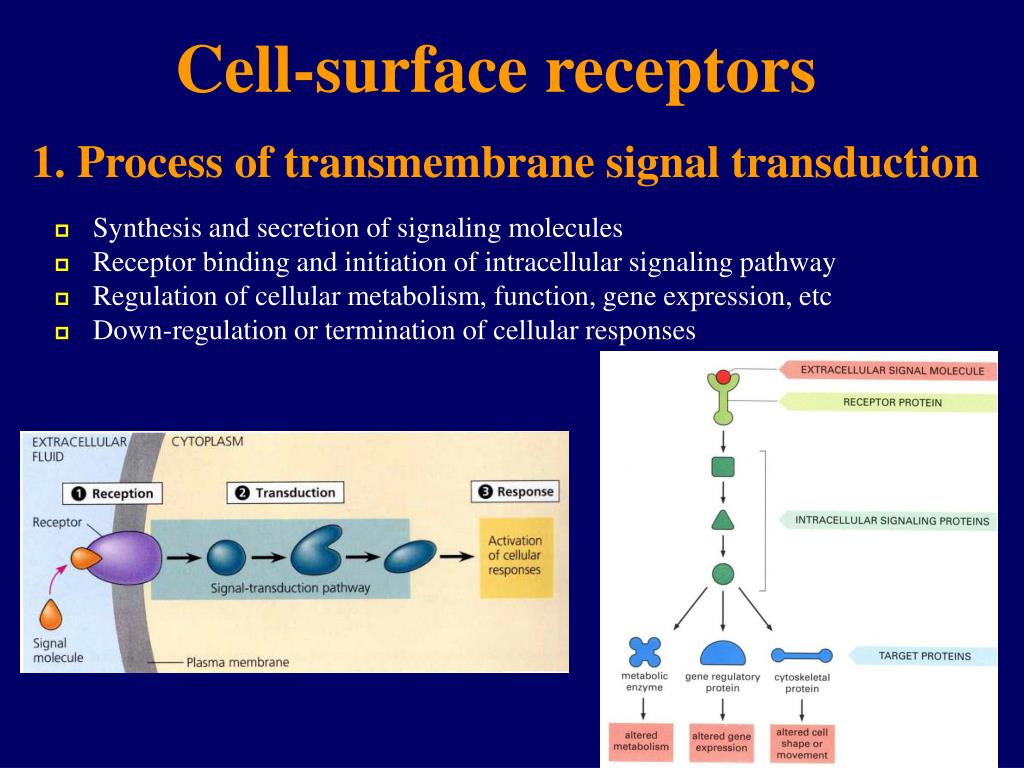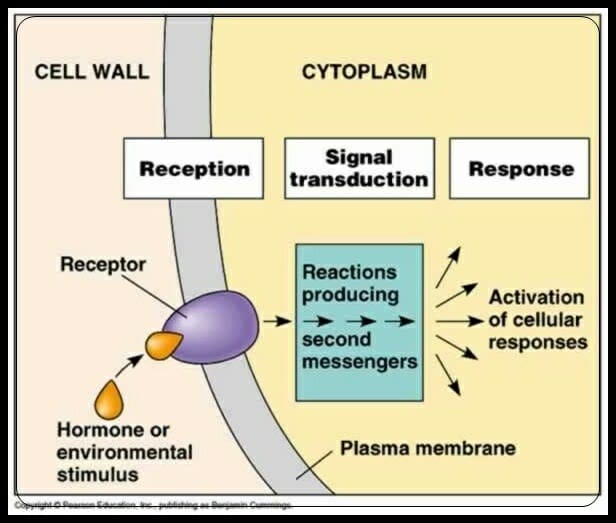

The number of signalling pathways is somewhat small. Signal transduction is an excellent example of nature’s ability to create a huge variability from a few basic constituents. The Wnt, Notch and the NF-kappa-b signalling pathways are activated through proteolytic processes occurring at the receptor. This group includes receptor tyrosine kinases which activate the MAP kinase pathway and the PI3 kinase signalling pathway, or the tyrosine kinase-coupled receptors such as cytokine receptors which activate the JAK-STAT signalling pathways or receptor-serine/threonine kinases that affect the TGF signalling pathway. Another important group of receptors controls enzyme-coupled signalling pathways. They mediate processes such as vision, smell and the effect of numerous hormones and neurotransmitters. The signalling pathways that are controlled by G proteins are the best understood of all signalling pathways. Another important group of receptors is the G protein-bound receptors. They are controlled by ligands or voltage changes and are of decisive importance for the transduction and amplification of neuronal signals. Ion channels are examples of membrane receptors. The conformation of the receptor changes and the signal is then transmitted into the cell. This enables the receptors to bind their specific signalling molecules outside the cell. One segment is embedded into the membrane and another part extends into the cell’s interior. These membrane-bound proteins expose their binding domain to the extracellular space. This is why many signal research projects focus specifically on these proteins.Īs previously mentioned, there are intracellular receptors as well as a large number of receptors that are anchored in the cell membrane. Since these messengers are able to activate different signalling pathways, they often serve as interfaces between different signal transduction pathways. The processing of signals also involves secondary messengers such as cAMP (cyclic adenosine monophosphate), cGMP (cyclic guanosine monophosphate) or Ca2+ (calcium ions). A protein, once stimulated by a particular stimulus, might not only have an effect on a single molecule but could also affect a large number of partners. In many cases, the signals are not transmitted in a linear fashion. The thus modified protein activates or inhibits a transcription factor. For example, a signal activates a kinase, which in turn phosphorylates a protein. This is achieved through coordinated protein-protein interactions. Moreover, environmental stimuli such as light, odour, temperature fluctuations and mechanical stimuli can invoke signalling processes.Īfter a signal is received by a receptor molecule it is transmitted to its target inside the cell – the effector protein. Grouped according to function, the signalling molecules include a broad range of different proteins such as hormones, growth factors, components of the extracellular matrix, cytokines, chemokines, neurotransmitters and neurotrophins. But there are also some very small signalling molecules that are hydrophobic and can easily diffuse through the cell membrane.

The majority of signalling molecules are hydrophilic and thus unable to pass through the cell membrane. Hundreds of signalling molecules are known, including proteins, peptides, amino acids, steroids, retinoids, fatty acid derivatives and dissolved gases such as nitric oxide or carbon monoxide. However, there are also numerous intracellular receptor proteins. In the meantime, there has been substantial evidence to show that diabetes, kidney, autoimmune and heart diseases are the result of defective signal transduction.Īn extracellular signalling molecule, also referred to as a ligand, normally binds to a receptor on the surface of the cell from where it is transmitted into the cell. For cancer, this was believed to be the case very early on. Nowadays, it is known that many diseases are the result of defective or missing signalling pathways. The immune defence is no more than a signal transduction process. The transduction of signals in and between nerve cells is well known. The activation of genes, metabolic changes, cell growth, division and death are just a limited number of important examples of processes that are controlled through signalling pathways.


 0 kommentar(er)
0 kommentar(er)
